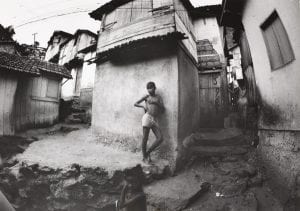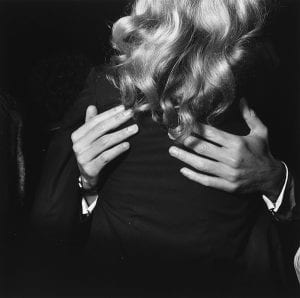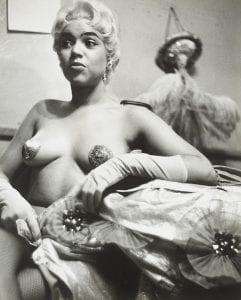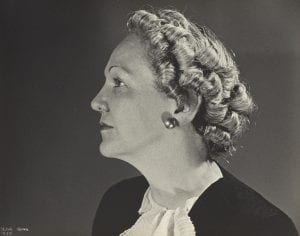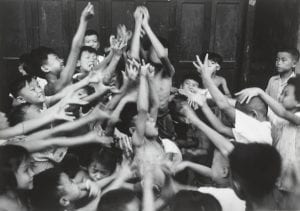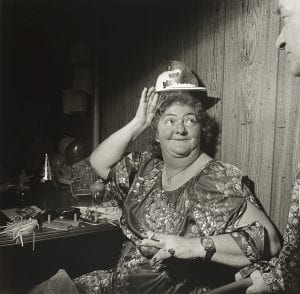
- This event has passed.
PHOTOGRAPHY: New Acquisitions from the LUAG Teaching Collection
September 4, 2012 - October 12, 2012
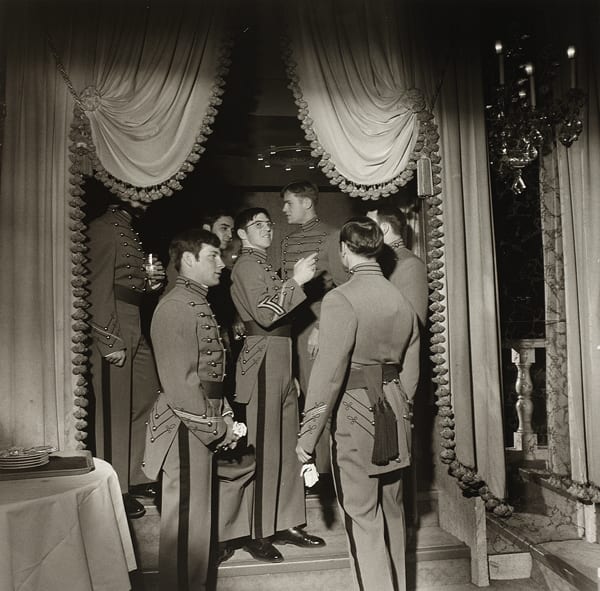
A gift to the collection by Peter Chatzky
Larry Fink (b. 1941) is an American photographer best known for his black-and-white images of people at parties and in other social situations. Born in Brooklyn, New York. He grew up in a politically conscious household and has described himself as “a Marxist from Long Island.” He studied at the New School for Social Research in New York City, where photographer Lisette Model was one of his teachers and encouraged his work. Fink has had one-man shows at the Museum of Modern Art, the Whitney Museum of Modern Art, the San Francisco Museum of Art, the Musee de la Lausanne Photographie in Belgium, and the Musee de l’Elysee in Switzerland, among others. He is perhaps best-known for the series Social Graces, produced in the 1970s, that depicted and contrasted wealthy Manhattanites at fashionable clubs and social events alongside working-class people from rural Pennsylvania participating in events such as high school graduations. Social Graces was the subject of a solo exhibition at the Museum of Modern Art in 1979 and was published in book form in 1984. In 2001, on assignment from The New York Times Magazine, Fink created a series of satirical color images using look-alike actors to portray President George W. Bush and members of his cabinet engaged in scenes of decadent revelry modeled on paintings by Weimar-era painters Max Beckmann, Otto Dix and George Grosz. The planned publication of the series was canceled after the September 11, 2001 attacks, but was displayed in the Spring of 2004 at Lehigh University Art Galleries in a show titled The Forbidden Pictures: A Political Tableau. Fink is the recipient of two Guggenheim Fellowships (1976, 1979), two National Endowment for the Arts Individual Photography Fellowships (1978, 1986), and was awarded an honorary doctorate from the College for Creative Studies, College of Art and Design, Detroit, 2002. His commercial work includes advertising campaigns for Smirnoff, Bacardi, and Cunard Lines (Q.E.2). His work has appeared in top publications such as Vanity Fair, W, GQ, Detour, The New York Times Magazine, and The New Yorker. He has been teaching for the past 41 years, the last 16 years as a professor of photography at Bard College.
Ken Heyman (b. 1930) first became interested in photography in high school. Later, during his student days at Columbia College—which were interrupted by a two-year stint in the army—his skill as a photographer grew, but he still regarded photography as no more than a hobby. Two events in college helped direct him toward his future career. First was the acceptance of his photographs for publication in two national photography annuals. Second, and perhaps more important was his becoming a student of the distinguished anthropologist Margaret Mead. To fulfill a term paper requirement in one of her courses, Heyman submitted a photographic essay that interested the famous professor. Out of this began a friendship and collaboration that continued for more than twenty years. Their first collaboration began shortly after his graduation from Columbia in 1956, when she invited him to go with her to take pictures in Bali. Other field trips followed: some with Mead and others where he went alone. Since then, Heyman has photographed in more than sixty countries. These photographs have appeared in major exhibits and in two books co-authored with Margaret Mead: Family (1965) and World Enough (1976). Heyman has done photographic assignments for many magazines, including Life. He has worked for the U.S. Information Agency, photographing Alliance for Progress projects in Latin America, and for several photographic agencies, including Rapho Guillumette Agency and Magnum. Shows of his work have been held at the Museum of Modern Art (1963), the Hallmark Gallery (1965), The International Center for Photography in New York City (1976), The Zabriskie Gallery in Paris (1995). Heyman’s work has brought him a number of awards including The World Understanding Award, considered to be one of the top awards in photography. It is given “to honor the photographer whose work has contributed most to a better understanding among the world’s people.” Heyman has done many books in addition to Family and World Enough. His recent works includes twenty-two books for children written by Ann Morris. The multicultural perspective in these acclaimed books reflects Heyman’s varied experience and his ability to sensitively interpret the human condition.
Ilse Bing (b.1899, d.1998) was a German avant-garde and commercial photographer who produced pioneering monochrome images during the inter-war era. Her move from Frankfurt to the burgeoning avant-garde and surrealist scene in Paris in 1930 marked the start of the most notable period of her career. She produced images in the fields of photojournalism, architectural photography, advertising and fashion, and her work was published in magazines such as Le Monde Illustre, Harper’s Bazaar, and Vogue. Respected for her use of daring perspectives, unconventional cropping, use of natural light, and geometries, she also discovered a type of solarisation for negatives independently of a similar process developed by the artist Man Ray. Her rapid success as a photographer and her position as the only professional in Paris to use an advanced Leica camera earned her the title “Queen of the Leica” from the critic and photographer Emmanuel Sougez. In 1936, her work was included in the first modern photography exhibition held at the Louvre, and in 1937 she travelled to New York where her images were included in the landmark exhibition Photography 1839–1937 at the Museum of Modern Art. She remained in Paris for ten years, but in the shadow of World War II, she and her husband immigrated to New York City in 1941. There, she had to re-establish her reputation, and got steady work in portraiture. By 1947, Bing came to the realization that New York had revitalized her art. Her style was very different; the softness that characterized her work in the 1930s gave way to hard forms and clear lines, with a sense of harshness and isolation. This was indicative of how Bing’s life and worldview had been changed by her move to New York and the war-related events of the 1940s. For a short time in the 1950s, Bing experimented with color, but soon gave up photography altogether. She felt the medium was no longer adequate for her, and seemed to have tired of it. In the last few decades of her life, she wrote poetry, made drawings and collages, and occasionally incorporated bits of photos. She was interested in combining mathematics, words, and images.
Joel Meyerowitz (b. 1938) is a street, portrait and landscape photographer. He began photographing in color in 1962 and was an early advocate of the use of color during a time when there was significant resistance to the idea of color photography as serious art. In the early 1970s he taught the first color course at the Cooper Union in New York City where many of today’s renowned color photographers studied with him. Meyerowitz was born in the Bronx, New York City. He graduated from Ohio State University in 1959 with a degree in painting and medical illustration. Inspired by seeing Robert Frank at work, Meyerowitz quit his job as an art director at an advertising agency and took to the streets of New York City with a 35mm camera and black-and-white film, alongside Garry Winogrand, Tony Ray-Jones, Lee Friedlander, Tod Papageorge and Diane Arbus. He drew inspiration from Henri Cartier-Bresson, Robert Frank and Eugène Atget. After alternating between black-and-white and color, Meyerowitz “permanently adopted color” in 1972, well before John Szarkowski’s promotion in 1976 of color photography in an exhibition of work by the then little-known William Eggleston. Meyerowitz also switched at this time to large format, often using an 8×10 camera to produce photographs of places and people. The work of Meyerowitz, Eggleston and Stephen Shore, seen and published in America and Europe, influenced the turn toward color of the next generation, and particularly of young German photographers. Meyerowitz is the author of 16 books including Cape Light, considered a classic work of color photography. Meyerowitz photographed the aftermath of the September 11, 2001 attack on the World Trade Center, and was the only photographer allowed unrestricted access to its “ground zero” immediately following the attack. A number of these images have since been made into a book, Aftermath: World Trade Center Archive. He has been the recipient of the Guggenheim Fellowship, the National Endowment for the Arts, the National Endowment for the Humanitites, and the German photo book prize, Deutscher Fotobuchpreis, for Aftermath.





